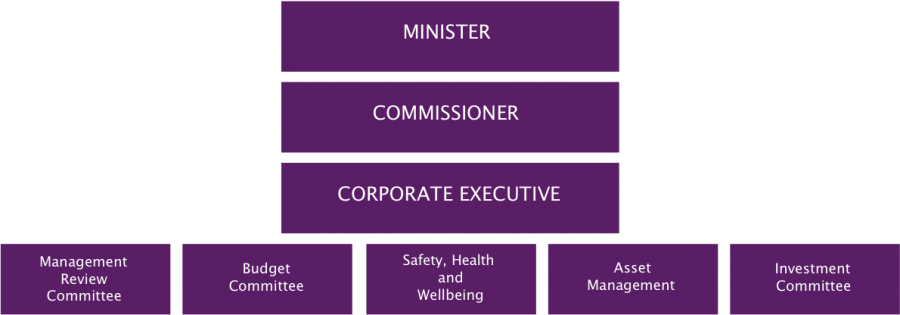| PSC Governance Principles |
ASX Governance Principles |
Our Commitment |
| 1. Government and public sector relationship – The organisation’s relationship with the government is clear |
|
We have structures in place to ensure clear lines of communication with the Minister for Transport, our portfolio partners and other government agencies including the capture and reporting of interactions. |
| 2. Management and oversight – The organisation’s management and oversight is accountable and has clearly defined responsibilities |
1. Lay solid foundations for management and oversight – A listed entity should clearly delineate the respective roles and responsibilities of its board and management and regularly review their performance. |
Keeping WA Moving clearly outlines our Aspiration, Strategic Areas of Focus, Guiding Principles and Values. Our Corporate Executive has a Charter and Performance Agreements are in place across the organisation at all levels. |
| 3. Organisational structure – The organisation’s structure serves its operations |
2. Structure the board to add value – A listed entity should have a board of an appropriate size, composition, skills and commitment to enable it to discharge its duties effectively. |
Corporate Executive is our main governance body, it is made up of the leader from each directorate and is supported by a number of subcommittees. Details of their roles and achievements are included in this report including performance reporting.
|
| 4. Operations – The organisation plans its operations to achieve its goals |
|
Our Business Planning and reporting process ensures that our activities are aligned to our strategic plan and achieving the outcomes for each of our services.
|
| 5. Ethics and integrity – Ethics and integrity are embedded in the organisation’s values and operations |
3. Instil a culture of action lawfully, ethically and responsibly – A listed entity should instil and continually reinforce a culture across the organisation of acting lawfully, ethically and responsibly. |
Our Integrity Framework and Code of Conduct ensure our commitment to professional behaviours that are consistent with our values and guiding principles. These are included in all inductions for new employees and contractors into the business.
|
|
6. People – The organisation’s leadership in people management contributes to individual and organisational achievements
|
|
Workforce planning across the portfolio is a high priority and we invest in leaders who will genuinely challenge the status quo. A culture of diversity and inclusion is actively promoted and supported. |
| 7. Finance – The organisation safeguards financial integrity and accountability |
4. Safeguard the integrity or corporate reports – A listed entity should have appropriate processes to verify the integrity of its corporate reports. |
Financial integrity is achieved through our Financial Management Manual, Internal Audit Charter and internal processes. The Budget Committee reviews and manages our financial performance on a monthly basis. |
| 8. Communication – The organisation communicates with all parties in a way that is accessible, open and responsive |
5. Make timely and balanced disclosure – A listed entity should make timely and balanced disclosure of all matters concerning it that a reasonable person would expect to have a material effect on the price or value of its securities. |
To provide consistent communications and services of value we work with the community and our customers by understanding their needs. We have high levels of engagement in conventional, digital and social media and have strong customer complaint handling procedures in place including Freedom of Information and PID.
|
| 9. Risk management – The organisation identifies and manages its risks |
7. Recognise and manage risk – A listed entity should establish a sound risk management framework and periodically review the effectiveness of that framework.
|
Our Risk Management process is a part of our integrated annual business planning process. We work closely with our portfolio colleagues to ensure consistency and tracking of high priority risks.
|


